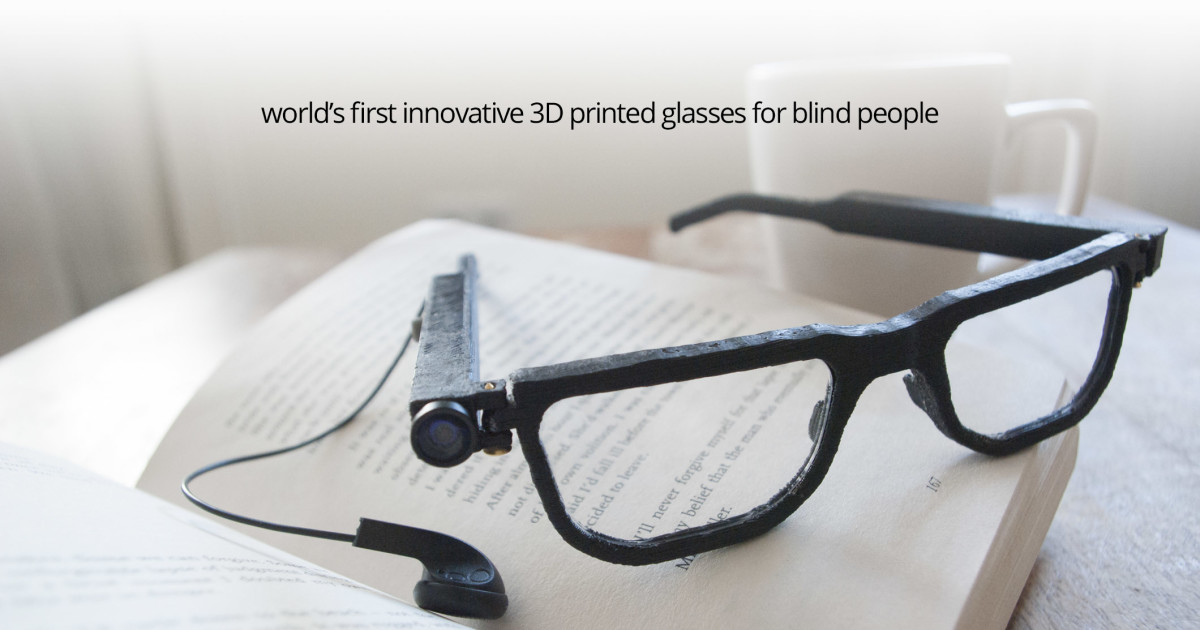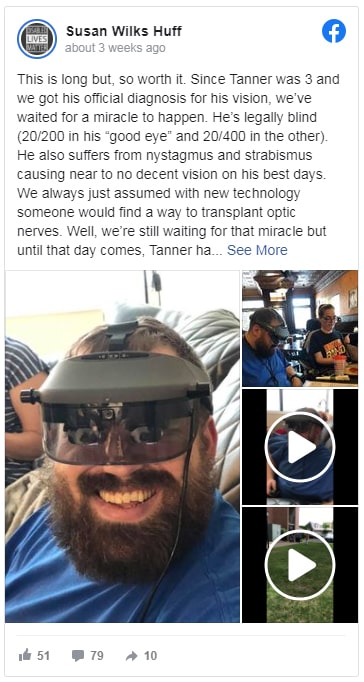Voice-Activated Assistive Devices: Empowering the Visually Impaired Through Innovation
Voice-Activated Assistive Devices: Empowering the Visually Impaired Through Innovation
Blog Article
Discover Advanced Assistive Instruments for People With Visual Disabilities
The landscape of assistive innovation for individuals with aesthetic problems is developing rapidly, providing a range of ingenious devices that enhance autonomy and interaction. From clever glasses that flawlessly merge aesthetic input with acoustic assistance to innovative navigation applications that redefine spatial recognition, these devices are improving opportunities.
Smart Glasses Innovations
Smart glasses represent a considerable development in assistive innovation for people with visual problems. These ingenious tools incorporate numerous functions created to improve the customer's communication with their environment. Outfitted with video cameras and sensing units, smart glasses can record real-time visual info, which is after that processed and shared to the individual with audio feedback or haptic feelings. This functionality permits individuals to receive immediate descriptions of their surroundings, boosting their ability to engage and browse with the world.
Moreover, innovations in fabricated knowledge have further improved the capabilities of clever glasses. Device understanding algorithms can recognize faces, read text, and identify things, making them very useful tools for everyday jobs. Users can receive auditory cues that offer context concerning their atmosphere, fostering independence and confidence.
Additionally, the ergonomic layout and lightweight nature of many smart glasses make them appropriate for prolonged use, guaranteeing comfort while improving performance. As these devices continue to evolve, they hold the possible to transform the way people with aesthetic impairments experience their everyday lives, connecting the void between accessibility and modern technology. The ongoing study and growth in this area pledge to increase the opportunities for clever glasses, making them a necessary part of modern assistive gadgets.
Navigation Application and Tools
Numerous navigating apps and tools have actually arised as crucial sources for people with aesthetic problems, substantially boosting their capacity to traverse unknown settings. These technologies utilize general practitioner functionality, audio signs, and real-time data to provide individuals with accurate navigating support.
One prominent example is the Aira app, which links users to skilled agents that can provide aesthetic descriptions of surroundings and navigation advice through an online video clip feed. This solution enhances the customer's spatial awareness and confidence while browsing. One more remarkable device is Seeing Eye GPS, which uses voice-guided navigating and points of rate of interest, making it possible for users to accessibility important information about their environments.

As technology continues to advancement, the development of much more advanced navigation devices assures to more encourage people with aesthetic problems, promoting smooth wheelchair and assimilation right into varied environments. Such innovations contribute in promoting an extra comprehensive culture.
Braille Innovation Improvements
In recent years, improvements in Braille technology have dramatically transformed how individuals with aesthetic problems access info and involve with the world around them. The development of mobile Braille displays has changed analysis by allowing individuals to attach wirelessly to computers, tablet computers, and smart devices. These devices convert text into Braille in real-time, allowing smooth communication with electronic web content.
Furthermore, ingenious Braille printers have actually arised, boosting the manufacturing of responsive products. Modern embossers are much faster and extra efficient, permitting the rapid development of Braille papers and academic products. This performance minimizes the moment and price connected with creating Braille resources, making them much more obtainable to schools and organizations.
Additionally, the integration of Braille with various other technologies, such as expert system and machine learning, has opened up brand-new opportunities for individualized discovering experiences. Voice recognition and synthesis technologies can match Braille, supplying an inclusive approach to details circulation.
As the need for inclusive education and learning and office settings grows, these technical advancements play an essential duty in encouraging individuals with visual problems, ensuring they have equivalent accessibility to information and possibilities in different elements of life.
Wearable Devices for Freedom
A growing array click for more info of wearable tools is enhancing freedom for individuals with visual impairments, offering innovative services that improve navigation and daily living. Braille displays and notetakers. These tools make use of advanced innovations to give real-time responses and support, advertising autonomy in various settings

Wearable innovation likewise consists of smartwatches that can be configured with availability attributes, making it possible for customers to obtain notifications, track their areas, or even require support with the touch of a switch. In addition, some tools integrate expert system to assess the setting, offering audio summaries of neighboring objects or people.
Voice-Activated Assistive Solutions
Leveraging voice-activated assistive solutions has actually changed the landscape of assistance for individuals with visual disabilities, supplying hands-free interaction and access to a range of tasks. These innovations utilize natural language processing and man-made intelligence to enable individuals to carry out daily activities via easy voice commands.

Additionally, current improvements in voice acknowledgment accuracy have boosted the user experience dramatically, accommodating diverse accents and speech patterns. This inclusivity makes certain that more individuals can gain from these innovations, fostering a higher feeling of freedom.
Conclusion
In verdict, the development of advanced assistive gadgets substantially enhances the self-reliance and lifestyle for people with aesthetic problems. Advancements such as clever glasses, navigation apps, Braille innovation, wearable tools, and voice-activated solutions collectively promote an even find out more comprehensive setting. These technologies empower users to navigate their environments with self-confidence and involve more fully with the world, eventually promoting higher availability and equivalent possibilities for people dealing with aesthetic difficulties.
The landscape of assistive innovation for people with visual disabilities is progressing quickly, providing a variety of ingenious devices that enhance autonomy and involvement.Smart glasses stand for a substantial improvement in assistive innovation for individuals with visual impairments. As these devices proceed to advance, they hold the possible to change the means people with aesthetic disabilities experience their everyday lives, linking the void in between availability and innovation.In recent years, advancements in Braille technology have eye exam near me actually substantially transformed how people with aesthetic impairments gain access to information and involve with the world around them. These technologies equip users to browse their surroundings with confidence and involve more totally with the world, ultimately advertising greater accessibility and equal opportunities for people facing aesthetic challenges.
Report this page